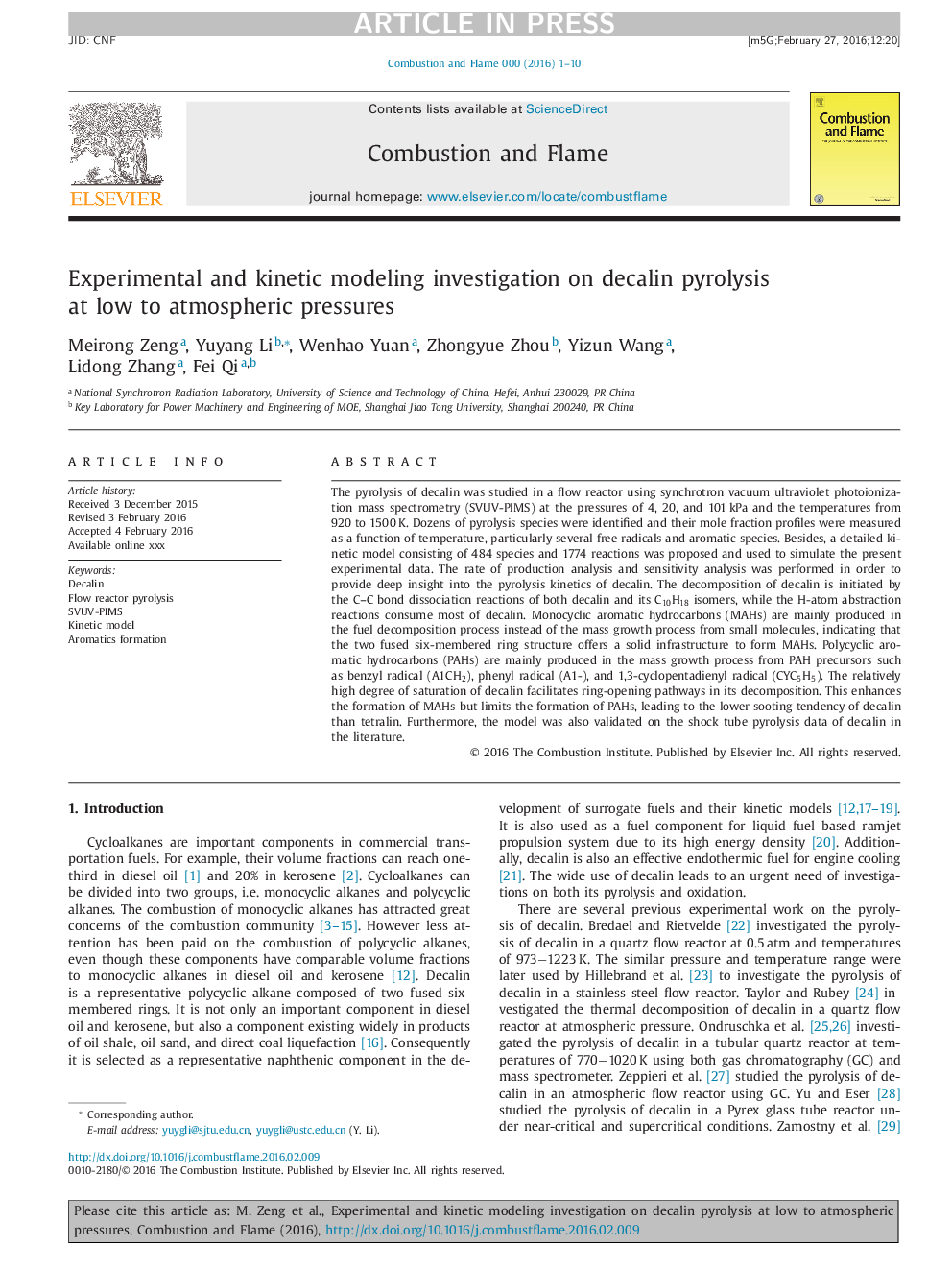| Article ID | Journal | Published Year | Pages | File Type |
|---|---|---|---|---|
| 6594109 | Combustion and Flame | 2016 | 10 Pages |
Abstract
The pyrolysis of decalin was studied in a flow reactor using synchrotron vacuum ultraviolet photoionization mass spectrometry (SVUV-PIMS) at the pressures of 4, 20, and 101Â kPa and the temperatures from 920 to 1500Â K. Dozens of pyrolysis species were identified and their mole fraction profiles were measured as a function of temperature, particularly several free radicals and aromatic species. Besides, a detailed kinetic model consisting of 484 species and 1774 reactions was proposed and used to simulate the present experimental data. The rate of production analysis and sensitivity analysis was performed in order to provide deep insight into the pyrolysis kinetics of decalin. The decomposition of decalin is initiated by the C-C bond dissociation reactions of both decalin and its C10H18 isomers, while the H-atom abstraction reactions consume most of decalin. Monocyclic aromatic hydrocarbons (MAHs) are mainly produced in the fuel decomposition process instead of the mass growth process from small molecules, indicating that the two fused six-membered ring structure offers a solid infrastructure to form MAHs. Polycyclic aromatic hydrocarbons (PAHs) are mainly produced in the mass growth process from PAH precursors such as benzyl radical (A1CH2), phenyl radical (A1-), and 1,3-cyclopentadienyl radical (CYC5H5). The relatively high degree of saturation of decalin facilitates ring-opening pathways in its decomposition. This enhances the formation of MAHs but limits the formation of PAHs, leading to the lower sooting tendency of decalin than tetralin. Furthermore, the model was also validated on the shock tube pyrolysis data of decalin in the literature.
Related Topics
Physical Sciences and Engineering
Chemical Engineering
Chemical Engineering (General)
Authors
Meirong Zeng, Yuyang Li, Wenhao Yuan, Zhongyue Zhou, Yizun Wang, Lidong Zhang, Fei Qi,
